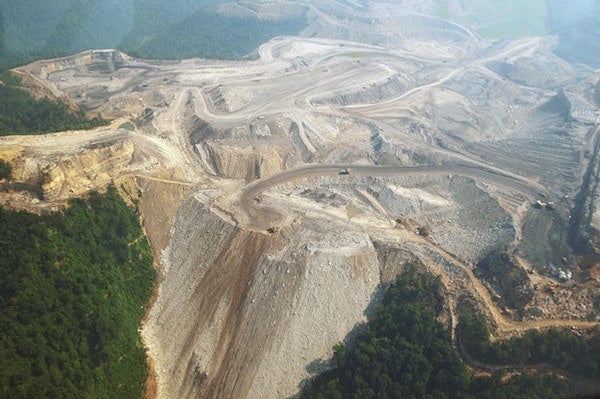Almost heaven...............not so much anymore.
Post# of 65629
https://www.youtube.com/watch?v=sBs9TuES5sc
Ironic and tragic that 'once upon a time' there was a GOP, a Nixon presidency, that gave us the EPA and the necessary regulations to mitigate and or prevent this kind of shit. Doesn't excuse the rest of his shit, but still...
That is if you wanted to pay attention to sciency shit and actually enforce reasonable regulations against unbridled industrialization by companies whose management thought 'ecology', not to mention health and safety, were Librul constructs and impediments to profits.
It's almost as though conservatards don't breath the same air or drink the same water that they heedlessly poison.
But then we all know that the god, guns, gays, flags and fetuses crowd always vote their own best interests. Well, their only interests anyway.
1.... 2......3...lose your shit Trumpanzees, but whatever you do don't post a well reasoned response instead of your usual mindless bleating's of 'Murica!'.
Hey Poem, 8th , Shade, enjoy the cognitive dissonance.
Them brain pans a yours should be fibrillatin' furiously as you matriculate your way though imagery, song and script.
Quote:
"Wild, Wonderful" West Virginia's Decapitated Mountains and Deformed Fish
https://blogs.scientificamerican.com/observat...rmed-fish/
A scientist documents the poisoning of the state’s waters by the coal industry
By Jacqueline Gerson on September 19, 201

—-
I pull out a metal wand connected to a digital screen. By putting this sensor into the water, I can determine the amount of free-floating ions—positively or negatively charged atoms and molecules—some of which might be harmful, others harmless.
A healthy stream will have a small number of ions, but one impacted by mountaintop mining can have up to 10 times this value. My reading today shows the stream that I’m standing in, which is close to a peakless mountain, has five times the ion concentration of the one I measured earlier in the morning.
After collecting water samples to analyze in the laboratory, I begin to kick around in the stream. Some of this kicking is the result of my frustration with the mining companies for causing such severe physical and chemical changes to the landscape.
But mostly I am kicking around to loosen rocks and free any insects that may be living under or next to them. I hold a small net downstream of where I’m kicking, ready to catch these insects before they float away.
After a few minutes I grab my net and have a seat on the stream bank to begin picking out the small bugs from among the leaf bits and sediment that have also entered the net.
By identifying the species as well as the number of individuals of each, I can determine the stream’s health—these small insects are extremely sensitive to contamination and can be used to indicate how much the water is affected by mining.
This stream’s health, in turn, will impact the health of larger animals that live in the water such as salamanders and fish, which consume the insects.
As I suspected, and as I’ve read about from other studies, the overall number of species I find is low. This does not bode well for more familiar charismatic animals that we love, such as deer, beavers and bears.
With a heavy heart, I record my findings in my notebook, pack my equipment back into the truck and continue down the road to record the chemistry and biology in the region’s other mined and unmined streams.
Later, in the laboratory I will analyze the water samples I collected and find contaminants such as selenium are highly elevated in mining-impacted streams, which explains the fish with curved spines—birth deformities caused by these high selenium concentrations.
It’s not just flattened bare peaks that have become the norm in mountaintop-mined West Virginia but also the pollution of streams and reduction in insects and animals that cannot survive under these conditions.
 (1)
(1) (0)
(0)